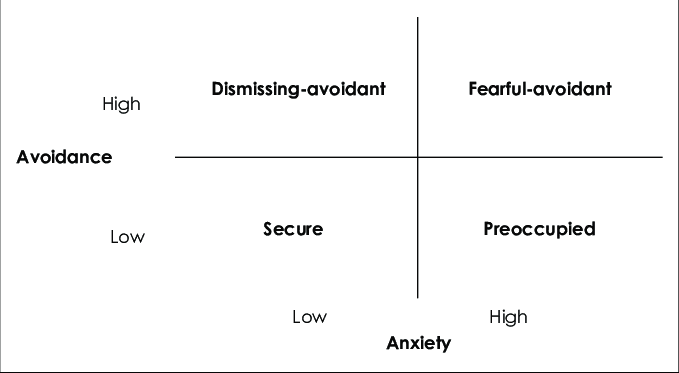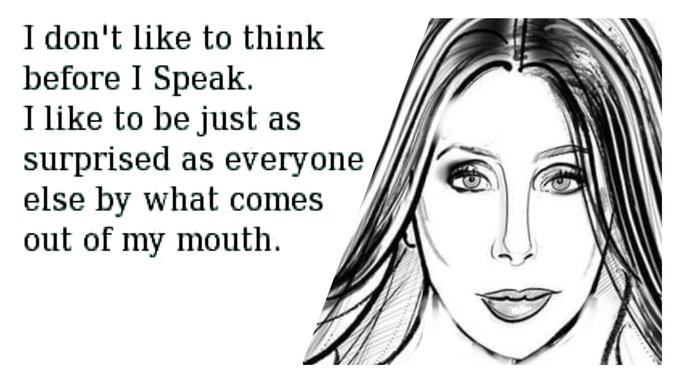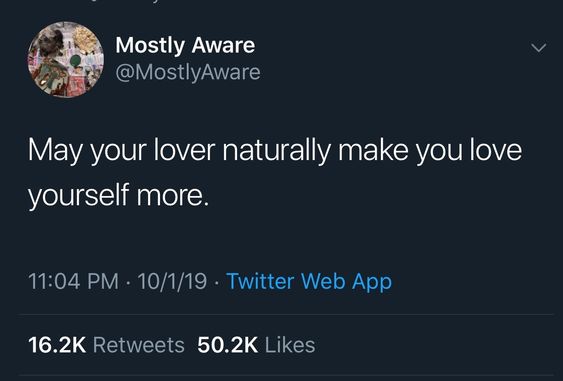Is there a secret shortcut to help us learn how to communicate with an avoidant partner?
Attachment style theory research shows that avoidant attachment affects 23% of people in the world.
So, there’s a great chance your partner’s avoidant attachment style is responsible for their poor communication.
In this guide, we will explore how to communicate with an avoidant partner to create a more fulfilling relationship.
Join me below!
Key Takeaways:
- How to deal with an avoidant partner
- communicate honestly about what you like;
- discuss boundaries often;
- give them space to reach out and show love first.
- How to get an avoidant to commit
- share your feelings about commitment;
- acknowledge their needs;
- don’t pressure them;
- be patient – they’ll be ready in their own time.
Avoidant Partner Communication Issues: Top 31 Ways To Improve Intimacy And Closeness

#1 – Know the Different Attachment Styles
Psychoanalyst and psychiatrist John Bowlby formulated the attachment theory.
There are 4 relationship attachment styles:
- Secure
- Fearful-avoidant
- Dismissive-avoidant
- Anxious-preoccupied

Bowlby’s attachment style theory provides invaluable insights. It reveals how our earliest relationships with our caregivers shape our reality as adults.
Understanding your partner’s attachment style better, as well as your own, is foundational to making things work.
The Good News
A revolutionary 2019 study published in the Journal of Personality and Social Psychology shows that attachment style is NOT entirely fixed.
While it does remain relatively stable throughout our lives, changes in attachment orientation do take place over time.
This means that with the proper support, an avoidant person is fully capable of:
- Becoming more open to contact.
- Feeling safe with you.
- Establishing a healthy, close bond with you.
Related: Why Do Guys Pull Away Before They Commit
#2 – Don’t Take It Personally!

Birk Hagemeyer of the Friedrich-Schiller-Universität Jena (Germany) studied couples sharing a strong desire to focus on the individual-self, separate from others (aka agency motives).
These couples are referred to as LAT (living-apart-together).
Ultimately, agency motives have 3 components:
- Self-protection
- Self-assertion
- Self-expansion
Strong agency motives are highly developed in avoidant partners. Thus, they tend to seek independent experiences.
Allow your partner to have as much distance, personal time, and space as necessary, without taking it personally.
#3 – Only Make Promises You Can Keep

Avoidant attachment types are often uncomfortable with intimacy.
This has much to do with the fear of being let down. So, they are dreadfully afraid to be disappointed.
Therefore, you only want to make promises you can actually keep. Otherwise, your partner may quickly build a close-to-indestructible defense wall.
#4 – Psst, Anxious Attachment On Board

Way too often, we are prone to analyzing others.
However, before trying to fix your avoidant partner’s issues, you should carefully consider your personal attachment style.
If you fall into the category of anxious attachment, then you need to focus on nourishing your sense of inner security.
Or else, you may easily exhibit signs of obsessive love style, which is the anti-magnet for avoidants.
It is crucial that we understand our own history of early childhood relationships models.
#5 – Cultivate Healthy Self-Sufficiency

People who exhibit traits typical for the anxious attachment style often find it extremely difficult to feel self-sufficient.
But this actually refers to many of us. Yes, even those who are not part of the anxious attachment style group.
As a rule of thumb, avoidants are terribly afraid of somebody becoming dependent on them.
Thus, what you want is to discover ways to fulfill your needs without relying heavily on your partner to do this for you.
Enjoy having activities, friends, and time all for yourself.
Related: Push-Pull Relationship – How To Break The Cycle
#6 – Share Your Sincere Desires Instead of Complaints

It is really important that you think of ways to keep communication on the positive side of the spectrum.
Don’t become someone who is always complaining or pointing fingers.
Instead, focus on sharing your beautiful, inspiring desires.
For example, you can say:
“I love spending time with you! I will be so happy if we spend more time together, but I don’t want to push you. I respect your private space.”
The NO-NO example would be:
“Why don’t you want to spend time with me? You are always busy with yourself!”
Heads Up
Mind that “desires are not analogous to events which cause,” as published in the journal article “Desires Don’t Cause Actions.”
Avoid misusing the power of your desires. Share instead of demand.
Related: Principles How To Be A High Value Woman
#7 – Say No To Monologues

You see, the easiest way to lose an avoidant partner is to engage in a monologue rather than a dialogue.
Put a focus on more active listening and less talking.
This is more suited to the communication styles of avoidants, according to attachment theory.
As noted in a research of dialogical investigation from a therapist’s point of view, “the process of listening is integral.”
This will allow you to keep up the conversation without making the avoidant retreat into his shell.

Your best move is to go with only a couple of sentences at a time.
Also, leave a gap in between, giving your partner time and space to respond.
Related: Avoidant Attachment Triggers & How To Heal
#8 – Express Your Emotions Mindfully

Intense emotional expressions overwhelm avoidant partners. As a result, they often reply by shutting themselves down or simply withdrawing.
According to a 2015 study, “the effects of recognizing emotional expressions in women are more intense.”
Certainly, regardless of gender, we all want to be with a person who can share our emotions and understand us.
However, when dating an avoidant, you’d better set some rules for yourself.
Be the one who is in full control of expressing emotions openly yet moderately.
This is the best way to communicate your feelings while also preventing a negative response related to the avoidant attachment style issues.
#9 – You Are Not Your Partner’s “Savior”

The white knight syndrome, aka savior’s complex, refers to the need to “save” others and fix their problems.
Of course, one should always learn how to cope with issues, instead of waiting for a savior.
Constantly trying to become an avoidant’s savior is one of the quickest ways to make your partner close to communication.
Related: Emotionally Unavailable Man Keeps Coming Back
#10 – Learn How to Soothe Yourself

Attachment avoidance can be extremely painful to deal with.
But before you find a partner who can meet your needs and aspirations, you should first and foremost meet them yourself.
Above all, love is something that starts from within.
You should not expect that your partner is there to cure your own feelings of abandonment.
Some of the practices that can help you soothe yourself and promote self-love include:
- Meditation
- Journaling
- Physical activity
- Creative activities
- Taking care of plants
- Spending time with Mother Nature
An avoidant partner loves when their partner is emotionally self-sufficient. This creates a secure environment for that helps them avoid stressful situations. You can’t expect to rely on avoidant individuals for emotional support in a romantic relationship.
Related: 21 Signs An Avoidant Loves You
#11 – Don’t Be Afraid To Be Vulnerable and Soft

Starting a conversation with:
- Criticism,
- Anger, or
- Blame is the worst-case scenario.
Indeed, feelings can get quite strong and hard to handle.
But remember, you have the full power to help your partner open up – just stay vulnerable and soft.
Yes, your vulnerability can be a superpower!
#12 – Consider Professional Counseling

Relationship coaching, as well as intimacy coaching, can be extremely beneficial.
Maybe your partner is not ready to join you but you can still reap the benefits yourself.
Then you can apply them to reconnect, boost communication, and improve your intimate relationship.
#13 – The “It Is Fear Rather Than Indifference” Rule
Maybe it comes to issues with your sex life or purely practical aspects of your relationship.
Just remember that avoidants don’t process emotions the same way most people do.
Do you feel like your partner:
- Does not care for you
- Keeps distance
- Puts up barriers
Then remind yourself it is not about indifference.

Avoidants experience daunting and unfamiliar feelings when somebody tries to take care of them.
Be patient, and above all, be gentle with yourself!
Being kind to yourself has both mental and physical benefits, studies suggest.
Related: Tips – How To Make An Avoidant Miss You
#14 – You’re Different, And That’s OKAY!

Recognize your partner’s pace and accept your differences.
Also, don’t forget that past romantic relationships have much to do with your partner’s personality. And the same goes for you.
Respect your differences and move on with grace.
#15 – Practice Gratitude

The avoidant attachment style affects relationships deeply, often leading to feeling:
- Regretful
- Frustrated
- Confused
- Angry
At any given moment, you know fairly well how you feel, right?
So, you also have the full capacity to switch perspectives. Learn to be grateful for what you have, instead of focusing on the pain.
Gratitude is the highest frequency that helps you work with more positivity and grace while grounding you in the present moment.
Related: 11 Tips How To Give A Guy Space Without Losing Him
#16 – Understand Defense Mechanisms

Attachment styles: “Avoidant.” Indeed, that’s a heavy label to deal with.
Avoidants tend to withdraw from relationships more quickly and frequently than any other type of person.
Research shows that attachment is related to “the primitive defenses of denial and projection.”
What you want to do is to learn how to recognize a defense mechanism.
#17 – Put Realistic Fantasies First On Your Menu

Feeling so distant from the one you truly love can hurt. A lot.
But then again, if you are dealing with the Attachment Style: “Avoidant” scenario, you need to remember you might also have your own mind traps to work out.
Ask yourself:
“Do I have realistic fantasies for my partner?”
Are you sure you are following the right romantic instructions yourself?
Maybe you are holding too tight on the idea of a perfect mate. And this only tends to lead to:
- Anxiety
- Depression
- Stress
#18 – Follow Your Authentic Needs

Research confirms that “more authentic people may be happier in their relationships.”
Following your authentic needs will give your avoidant partner space to follow and express his authentic self, too.
Just be patient, and be true to your authentic self!
Related: When He Pulls Away Do Nothing
#19 – Be Honest!
You want to know how to express your needs and desires clearly.
Give examples. Speak clearly.
Honesty is the foundation of establishing a closer connection with the one you truly love.
#20 – Boundaries Matter!

It is a must to tell your partner what you tolerate and what you do not tolerate.
Dysfunctional behavior is not what you need in your life, right?
Set healthy boundaries around avoidant behavior, and your partner will be ready to let his guard down over time.
#21 – Discuss Boundaries
It’s one thing to set boundaries, but discussing them with your partner is another story.
If you want to learn to communicate with an avoidant partner, you’ve got to have the ‘boundaries’ talk. Learn each other’s limits.
This is the only way to respect each other’s needs, especially if you have different attachment styles.
#22 – Try Not To Catch Them Off Guard
One of the most important rules for communicating with an avoidant partner is not to catch them off guard. Instead, plan your quality time ahead.
Otherwise, they’ll feel like they’re not in control of the situation and that their independence is threatened. As a result, they may close up even more.
#23 – Create A Safe Space
The best way to communicate and connect is to do it in a safe environment.
Make your avoidant partner feel safe, loved, and accepted. Show compassion.
You’ll have a much better chance of improving intimacy if your relationship feels safe for both of you.
#24 – Don’t Depend On Them
One of the biggest relationship triggers for an avoidant is when they feel you’re too dependent on them. So, instead of chasing them, focus on yourself. Explore your interests. Find a new hobby.
Put yourself first and don’t depend on anyone, especially not an avoidant part. When they feel you’re self-sufficient, they may become even more drawn to you.
#25 – Appreciate Your Partner’s Efforts
Intimacy doesn’t come easy to people with an avoidant attachment style. So when you see your partner trying their best to connect with you, try to acknowledge their efforts.
That’s a huge step for them, and they’ll love you more for being able to appreciate it.
#26 – Tell Them When They Do Something You Like
Everyone loves praise and appreciation. So instead of only focusing on the bad, try to do the opposite.
What do you like about your partner’s behavior?
Make sure you tell them when you like something they do because that’s how they’ll know they’re headed in the right direction.
#27 – Let Them Reach Out To You First
Instead of always being the first to initiate conversations, why don’t you try to let your avoidant partner come to you?
This balanced approach to communication will give your partner their power back. They’ll feel less threatened and controlled, making them more open to intimacy and closeness.
#28 – Show Them What Relationships Are All About
Not everyone is lucky enough to have healthy family dynamics. So, if you were one of the lucky ones, and your partner wasn’t, show them what relationships are all about.
Those without good role models usually develop an avoidant attachment style. An avoidant partner may be the same, which means they now have to re-learn what a healthy relationship looks like. Be there for them.
#29 – Use Non-Threatening Language
Using non-threatening language when communicating with an avoidant partner is a must.
Instead of using ‘You’ statements, try using ‘I’ statements. It will come off less aggressively, so your partner may feel less reluctant to open up to you.
#30 – Listen More
Listening is often underrated. People focus too much on fixing things, and sometimes it’s just a matter of listening to your partner.
Make them feel accepted. Don’t always be a problem-solver, be a listener.
#31 – Share Your Fears With Them
If you open up to your partner, the chances are higher that they will open up to you too. That means you should share the good, the bad, and the ugly with them.
Open up about your own fears and struggles. Even though your partner has an avoidant attachment style, it doesn’t mean they’re emotionless. Quite the opposite! They may just need more time.
Build trust with your partner and allow them to be vulnerable with you on their own terms.
Love vs. Leave Avoidant Partners: FAQ Section

Do Avoidants Miss You?
YES, avoidants can miss you.
However, avoidants internalize their feelings.
Therefore, they rarely (if ever) show any clues that they may, indeed, miss you (even if they miss you painfully much).
Do Avoidants Fall In Love?
An avoidant partner can fall in love, however, avoidants define love differently than most people do.
Being afraid of disappointment, avoidants are prone to folding or backing off. Also, they tend to focus all of the “butterflies-in-the-belly” energy elsewhere.
Usually, they would prefer to cool down this energy and dedicate it to themselves and their personal quests.

Conflict Avoidant Husband/ Wife: What To Do?
Conflict is an essential part of every healthy relationship, as long as it is resolved from a place of peace, love, and mutual respect.
However, a husband or wife who remains in the avoidant position in resolving conflicts can play a devastating role in any marriage.
Such couples can help each other by learning how to apply self-soothing methods.
They can learn how to use disappointment and frustration to maintain attachment by catalyzing these feelings.
For this purpose, communication is crucial, as both partners must first and foremost open up and recognize the problem.
What Do You Say To An Avoidant Partner?
NEVER push avoidant people to talk until they are ready for it. This will make them feel threatened.
When communicating with avoidant partners, we should focus on positive reinforcement.
Reinforce positive actions with encouragement, while giving your partner plenty of emotional space to help him feel safe.
This will aid in building trust over time, through consistency, patience, and forgiveness.
What follows is behavioral change, since people tend to repeat behaviors that lead them to positive feelings.
How Does An Avoidant Show Love?
Don’t try to squeeze love from your avoidant partner by making demands or pushing him to talk about his feelings. This is the WORST move possible.
Doing so makes avoidants withdraw into their shells.
They may be storing tons of love for your caring soul but it is impossible to show it as they are afraid to feel vulnerable.
How To Get An Avoidant To Commit?
1 – Understand how your partner feels about commitment. Acknowledge their needs.
2 – Talk openly about your love and positive feelings regarding your relationship.
3 – Give your partner enough space and understanding to process their repressed emotions.
4 – Set a healthy boundary to a tough conversation. Once the avoidants regroup their ideas, they will be ready to commit to the conversation, and over time, to commit to you.
How To Deal With An Avoidant Partner?
Some of the best ways to deal with avoidant partners:
- Let them know they are appreciated and loved, despite their behaviors.
- Give them time and space to cool down and to process their emotions.
- Don’t accuse your partner.
- Avoid asking him outright about the future, as this may lead to panic and unwillingness to commit.
Leaving An Avoidant Partner: When Do You Know Enough Is Enough?
Relationships with avoidant partners tend to be tough. Sometimes, the best thing for your mental health and theirs is to leave and move on.
This could be the best decision if the avoidant:
- Remains fully closed to any form of discussion.
- Refuses to commit to self-improvement and is unwilling to change.
Let’s Share The Good Vibes!

The 31 strategies I shared can quickly boost communication and closeness between partners.
I hope you found this article helpful.
May we spread good energy together.
If you like this article, share it with friends. Your ideas, questions, and comments are always welcome, too!
Related Content
Getting Over A Breakup Is A Chance: Get Over Your Ex Fast
How Our Childhood Affects Our Adult Lives
Couples Coaching – Can a Relationship Coach Help?
